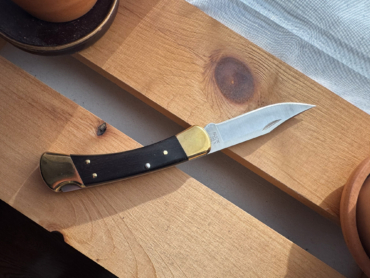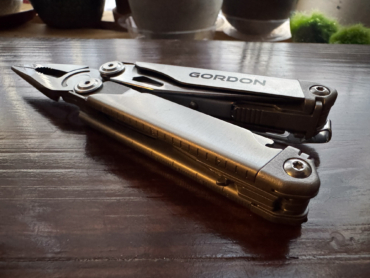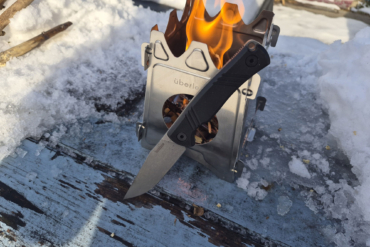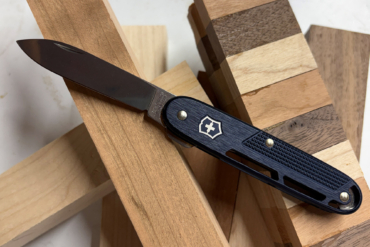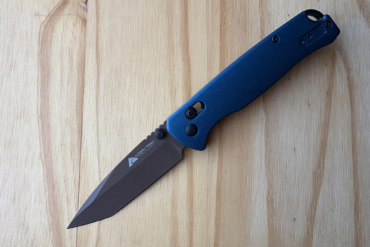Travelers to Canada will want to double check all their bags following the country’s prohibition on many common knives legal in the U.S. and elsewhere.

The Canada Border Services Agency (CBSA) last week announced a crackdown on “centrifugal opening knives.” Anyone traveling into Canada should leave their flick, stud, disc, or flipper-activated folders at home.
The notice follows a November decision by the Canadian International Trade Tribunal (CITT) that dismissed an appeal of the law. T. LaPlante v. President of the Canada Border Services Agency sought to reclaim a seized shipment of Kershaw Skyline 750 Knives in the wake of a 2015 law banning many folders. But the recent ruling paved the way for the CBSA to prohibit all but the most basic folding knives and multitools.
Canadian Law: What Knives Are Illegal?

The new prohibition by the CBSA will affect travelers and residents alike. According to the law, enforcement deems a folding knife illegal if:
- It has a blade that opens by centrifugal force, when, with a simple and brisk outward flick of the wrist, the blade is released from the handle into the fully ejected and locked position; and
- It requires some preliminary or simultaneous minimal manipulation of either a flipper or other non-edged parts of the blade.
The CBSA also updated its list of prohibited weapons, which includes gravity, centrifugal, and automatic knives, among others. And Memorandum D19-13-2 outlines guidelines for the importing and exporting of weapons. Putting the two together provides a (somewhat) clearer understanding of what’s illegal to carry:
- Automatic knife – Opens automatically by applying hand pressure to a button, spring, lever, or other device, in or attached to the handle of the knife, including knives that have a button, spring, lever, or other device located in the spine of the handle and attached to the inner part of the blade
- Centrifugal knife (folding knife, butterfly knife, balisong knife) – Opens automatically through the use of centrifugal force, moving in a circular path and directed away from [the center of the body]; i.e., can be opened with a flick of the wrist
- Gravity knife – Can be opened automatically by force of gravity even if the knife can be additionally controlled by a lever or button
- Push dagger – The handle is placed perpendicular to the main cutting edge of the blade (or blades) and any other similar device
- “Constant Companion” (Belt buckle knife) – A belt containing a blade capable of being withdrawn from the belt
- Concealed blades under 30 cm – Any device having a length of less than 30 cm and resembling an innocuous object but designed to conceal a knife or blade; e.g., “knife combs,” penknives, lipstick knives, certain types of necklace knives, and knives contained in credit-card-sized cases clearly resembling real credit cards and designed as weapons
What Knives Are Legal in Canada?
Many forums are wrestling to define what folding knives are legal under Canadian Law. And much of it seems to be open to at least some interpretation. But CanuckSurvival.com sums it up well:
This law is about intent. This means if you’re caught with a knife that’s concealed on your person while in a location you don’t require a knife to be used as a tool, you may be in for a bad time.
While it’s not ironclad legal advice, generally speaking it’s not advised to carry any knife into situations where it’s not clearly needed. That said, the CBSA does outline some knives that are not prohibited:
- Sword canes/umbrella daggers more than 30 cm in length – Swords contained in canes, frequently where the handle of the cane also serves as a handle for the sword sheathed inside the cane’s/umbrella’s shaft
- Multitools/card tools – Credit-card-sized plastic cases that contain a number of small functional items such as scissors, a compass, and tweezers; these tools will almost always include a small blade or knife that is concealed by the plastic case; they are not designed as weapons but as functional tools
- Certain thumb stud knives – Knives having “thumb studs” attached to the blade that are independent of the handle (not protruding from the handle in the closed or folded position), and that open automatically by applying pressure to the thumb studs
Note: Must not also act by gravity or centrifugal force; see above.
Clear as mud? It appears the law leaves a lot to the interpretation of law enforcement. Overall, it’s much more restrictive than other countries, namely the U.S. and even Australia. Carrying knives – even multitools – could be trouble. And it’s definitely not advisable to bring folding knives (or other weapons) into the country if there’s any question about its legality, especially if you don’t want to lose it at the border.
Use the criteria above to help understand the intent of the law. This article is not intended as legal advice, only to raise awareness of the issue. If you have any questions, call Canada’s Border Information Services or contact an attorney.


